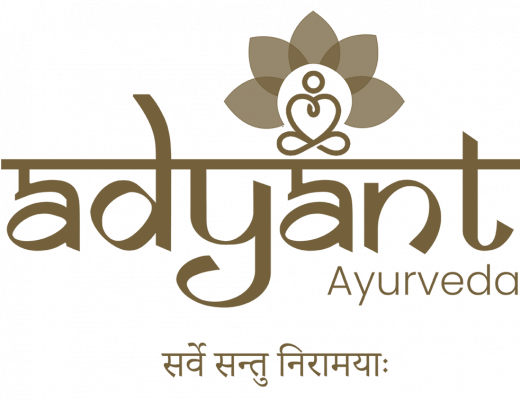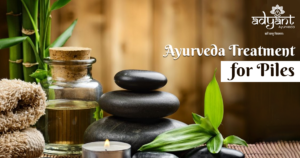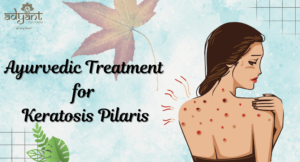Table of Contents
ToggleConcept of Vamana Therapy or Treatment in Ayurveda
Ayurveda is a life science that focuses on both preventive as well as curative aspects of an individual. According to Ayurveda being healthy means maintaining the equilibrium of doshas and Dhatus in the body. It mainly focuses on healing through correcting the root cause. Here will discuss the concept of Vamana treatment in Ayurveda. One of the concepts in Ayurveda includes panchakarma treatment which plays a very significant role in both curative as well as preventive actions Ayurveda
Panchakarma being a part of Ayurveda includes 5 major procedures which help in bringing the doshas and Dhatus in equilibrium and help in correcting the metabolism of an individual.
One procedure among the panchakarma is “Vamana.” Vamana termed therapeutic vomiting or emesis is a procedure in which the toxins are eliminated through the upper route. As purificatory or detoxifying therapy, wherein the accumulated toxins are expelled through a process of medicated emesis/vomiting.
For Free Consultation Download Our App “Ayurcare“
Procedure of Vamana / How is Vamana Therapy Administered?
Vamana is done in two ways i.e., Sadyo Vamana, or instant therapeutic emesis, and Classical Vamana, or Therapeutic emesis which are done based on the conditions or severity of the ailment and patient.
Sadyo Vamana is a one-day procedure where the person is made to drink medicated Kashayams, milk, etc, to induce vomiting and expel the doshas and toxins from the system.
Classical Vamana is an elaborative process. In the first stage, medications are given to improve the metabolism to facilitate proper digestion of the Snehana Dravyas.
The next stage, medicated Snehas is administered in increasing dosage as a form of internal Oleation till certain signs of Oleation are observed.
Next phase, external Oleation is done by undergoing abhyanga (oil massage), etc. Along with these procedures, a specific diet is also advised.
You May Also Like: Abhyanga, the Ayurvedic Oil Massage
Vamana Treatment Diet
Before the day of Vamana treatment certain foods which helps to increase Kapha dosha like milk, urad dal, sweets, etc are advised to enhance the best result through Vamana.
On the day of Vamana, the procedure is done on an empty stomach in the morning hours which has the predominance of Kapha dosha.
Procedure where the person is made to drink medicated Kashayams, milk, etc, along with Vamanopaga Dravyas or emetic drugs with thorough monitoring to induce vomiting and expel the doshas and toxins from the system.
After the procedure, the person asked to rest and take a light diet and a warm bath.
Read Also: Ayurvedic Doshas: Vata, Pitta, Kapha
What Are the Indications for Vamana?
| S. No. | Indications for Vamana |
| 1 | Cough, cold. |
| 2 | Bronchitis, Asthma, etc. |
| 3 | Obesity |
| 4 | Infertility |
| 5 | Skin diseases like psoriasis, vitiligo, etc. |
| 6 | Hypothyroidism |
| 7 | Digestive disorders etc. |
What Are the Benefits of Vamana In An Individual? / The Amazing Benefits of Vamana Ayurveda Treatment
| S. No. | Benefits of Vamana |
| 1 | Improved metabolism |
| 2 | Detoxification |
| 3 | The lightness of the body |
| 4 | Wellness of mind, body, and soul |
| 5 | Promotes health |
| 6 | Increased energy and stamina |
| 7 | Improved physical and mental health |
| 8 | Greater strength and flexibility |
Side Effects of Vamana Treatment / Disadvantages of Vamana Treatment
While the practice is typically considered safe, there are a few potential side effects that should be considered.
The first potential side effect of Vamana therapy is increased blood pressure. This is because Vamana therapy can improve blood flow and circulation, which can lead to an increase in blood pressure. If your blood pressure is already high, Vamana therapy may not be the best option for you.
Another potential side effect of Vamana therapy is dizziness. This is because Vamana therapy requires you to remain still for a long period of time, which can lead to dizziness. If you experience dizziness while practicing Vamana therapy, it is important to speak with your doctor about the best way to proceed.
Last, but not least, Vamana therapy may cause a decrease in the production of saliva. It’s always advisable to perform under the guidance and presence of a senior Ayurveda doctor.
Can Vamana Be Beneficial For A Healthy Individual?
Ayurveda emphasizes Vamana not only for curative purposes but also as preventive and rejuvenating measures in a healthy individual.
Though it can be done in all seasons, Ayurveda specifies Vasanta Ritu (spring season) as the best season for Vamana therapy.
Why Vasantha Vamana? / Vamana Treatment in Ayurveda
Aggravated Kapha dosha tends to liquefy during Vasantha Rithu giving rise to various ailments. As Vamana is the best Shodhana or cleansing therapy for the elimination of aggravated Kapha dosha, Vamana is indicated in Vasantha Rithu.
Effectiveness of Vamana Treatment
There are a number of reasons why Vamana treatment is considered to be an effective way to treat a number of conditions.
- First, Vamana therapy is able to help improve the function of the digestive system. This is important because the digestive system is responsible for breaking down food and absorbing nutrients. When the digestive system is not functioning properly, it can lead to a number of problems such as nutrient deficiencies, weight gain, and digestive disorders.
- In addition, Vamana therapy can also help to improve the function of the respiratory system. This is important because the respiratory system is responsible for delivering oxygen to the cells and removing carbon dioxide from the body. When the respiratory system is not functioning properly, it can lead to a number of problems such as shortness of breath, fatigue, and respiratory infections.
- Finally, Vamana therapy can also help to improve the function of the immune system. This is important because the immune system is responsible for protecting the body from diseases and infections.
Conclusion
Health is not only about curative treatments for ailments but also about preventive measures to maintain health. Ayurveda has advocated Shodhana Chikitsa for healthy individuals and also to promote health. Enjoy the benefits of Ayurveda for well being of mind, body, and soul. You can meet our team of best Ayurvedic doctors to understand how Vamana treatment helps to cure diseases.
Read Other Related Blogs:
FAQs
No, vamana procedure should be taken under the guidance and consultation of the doctor.
Yes, there is specific diet to be followed before and after vamana procedure.
No, this procedure must be done under the guidance of doctors only.
Yes, vamana can be performed on opd basis by following the advised diet and regimens.
Vamana can be of 2 ways I.e., sadyo Vamana-usually planned for a day and classical vamana-which includes 12-14 days.
Yes, as ayurveda focuses both on preventive and curative aspect, these panchakarma therapies taken in specific season helps to maintain the equilibrium in an individual. It is also a therapeutic procedure which is beneficial in many ailments like respiratory disorders, skin diseases, weight management etc.
Usually Vasantha ruthu (spring season) is best season for this procedure if there is no specific condition. According to ayurveda there is a aggravation of kapha dosha which can lead to many health issues, as a preventive measure in vasantha ruthu vamana is advised to balance the kapha dosha.
Usually there is no such side effects post procedure, in some cases patient can experience loose stools/motions which is quite normal.






